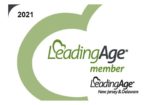Common Evidence Issues in Family Part Trials: Yes, the Rules Apply
March 18, 2021 | by Matheu Nunn, Matthew TroianoAs published in the New Jersey Law Journal
An overview of evidence issues and the accompanying rules that are frequently encountered in Family Part litigation, including real-world examples to reinforce that you must be able to navigate the rules; after all, your adversary may know them well.
Some family law practitioners treat the Rules of Evidence as suggestions. Although judges may relax the rules, N.J.R.E. 101(a)(3), make no mistake, you must know and be able to use them. This article is intended to give an overview of evidence issues and the accompanying rules that are frequently encountered in Family Part litigation. If you view the Rules of Evidence as a mosaic—with each rule playing its part in the overall picture—they may prove to be an enjoyable part of your practice. They may also provide a tactical advantage over your adversary.
One of our favorite rules is N.J.R.E. 106, also referred to as the doctrine of completeness. The rule requires a party who has introduced a writing/recording to introduce, contemporaneously, any other part of the writing/recording that “in fairness ought to be considered at the same time.” In practice, we used this rule during our adversary’s direct examination to discredit their mental health expert. In that case, which involved an alimony obligor who sought to eliminate his support payments based on “disability,” the expert cited to the definition of “malingering,” which in lay terms means “faking sick,” within the DSM-V (as in, the expert opined the obligor was not malingering). As we followed along with the expert, we realized that he excluded a key component of the definition. We objected and the expert was then forced to read that malingering should be strongly suspected where: “the individual is referred by an attorney to the clinician for examination or the individual self-refers while litigation or criminal charges are pending.” Note: you may also encounter completeness issues with the use of deposition transcripts. If so, you should look to Rule 4:16-1(d).
Next, is the hearsay exception for “learned treatises,” N.J.R.E. 803(c)(18). If you practice family law, you have encountered expert witnesses. Custody experts in particular love citing treatises upon which they relied. Few of them cite entire passages, N.J.R.E. 106; fewer can remember the preceding sentences from the passage they cited. If you encounter an expert who cites a treatise, you must make a tactical decision: do you depose the expert and probe that subject, or do you simply ask for the treatises or articles upon which the expert relied? Hint: select one of these two options. You must then do your homework to find: (i) contrary information contained in that expert’s materials; and/or (ii) other treatises that call into question that expert’s materials. Then, on cross-examination, you can rely on the expert’s treatise (or one you found) to impeach the expert. Note: if you cannot get the adverse expert to acknowledge your materials are “a reliable authority,” N.J.R.E. 803(c)(18)(B), you can have your expert identify the material as such. Three years ago, we encountered an expert who opined that one litigant should be the primary custodial parent. The expert hinged his testimony on the age of the child and “attachment” theory. The expert relied on an outdated edition of the treatise. We found the most recent version of the treatise and discovered that it had changed to debunk the outdated theory. We confronted the expert with the updated treatise on cross-examination—and he was forced to change his opinion on the stand.
Next, “Judicial Notice,” specifically under N.J.R.E. 201(b), provides fertile ground for information in a Family Part case. In practice, you may be faced with an underemployment/imputation of income dispute. Most practitioners resort to the two or three “employability experts” in this field. While those experts may serve a function in some cases, courts in our state have utilized N.J.R.E. 201(b) to accept published government labor/wage statistics in lieu of (or while rejecting) employability experts’ opinions.
“And then he told me …” followed by “Objection!” We are, of course, referring to hearsay. Hearsay is “generally” not admissible, N.J.R.E. 802, except as provided by the exceptions set forth in the evidence rules, N.J.R.E. 803. But not every out-of-court statement is hearsay. Fortunately, the restyled N.J.R.E. 801(c) provides a concise definition. Hearsay can be broken down as follows: (i) a statement made by a declarant; (ii) the statement is not made by the declarant while testifying at the “current” trial; and (iii) the party offering the statement does so for the truth of the out-of-court statement. Two obvious questions flow from that definition. First, what does not constitute hearsay? Second, what exceptions are there to the hearsay prohibition?
When trying to determine what constitutes hearsay, first ask yourself: for what purpose is the statement offered? An out-of-court statement by a declarant being offered for a purpose other than its truth is not hearsay. There are numerous examples of non-hearsay, out-of-court statements. The most common application is where an out-of-court statement is used to explain why a person acted in a certain manner (i.e., the effect on the listener). Imagine an equitable distribution claim in a divorce case in which one spouse claims that the other made poor investment decisions for some nefarious reason. The spouse who made the trades alleges: “our financial advisor told me that it would be a great idea to buy 1000 shares of Blackberry at $100/share.” In this example, Blackberry shares plummeted. The spouse who made the trade seeks to introduce the financial advisor’s statement to demonstrate why he bought the stock—not that Blackberry at $100/share was actually a “great idea.” This would be a valid, non-hearsay out-of-court statement. See also Carmona v. Resorts Hotel, 189 N.J. 354, 376 (2007) (permitting use of employer’s investigative report to show that employer decision was not made for pretextual reasons).
In the event the out-of-court statement is being offered for its truth, there are a host of exceptions that may permit its introduction at trial. Two of the most common exceptions are prior consistent statements pursuant to N.J.R.E. 803(a)(2) and a statement by a party opponent under N.J.R.E. 803(b). Take, for example, testimony given during a Final Restraining Order hearing. Often these matters come down to the credibility of the respective parties and out-of-court statements may be equally important to trial testimony.
Attorneys questioning their clients may attempt to call other witnesses to introduce an out-of-court statement(s) made by their clients (e.g., a friend of the plaintiff; the first responding police officer). And that witness may be asked, “what were you told?” Seems reasonable on its face. Admissible? Not so fast. N.J.R.E. 803(b) addresses statements by a “party-opponent”; not merely statements by a party. There is a difference between the two. The former is permitted, but not necessarily the latter.
You may seek to introduce this testimony to bolster the credibility of the party, show that he or she has been consistent throughout, and attempt to solidify the reasonableness of the requested relief. But sequence is important. Call your client first, have him or her testify, and then, after cross-examination, look to support their credibility through prior consistent statements. Such statements are offered to offset the “express or implied charge” that the witness recently fabricated or has an improper influence or motive. Whether this has occurred may be more complicated than it seems. You will also have to determine if you are offering a consistent statement as substantive evidence, N.J.R.E. 803(a)(2), or to support the credibility of your witness, N.J.R.E. 607(b). Two additional things to consider. First, has there been an attack on the credibility of the witness that necessitates introducing a prior consistent statement? Second, is there some level of redundancy that is grounds for an objection under N.J.R.E. 403?
Next, you must know that under N.J.R.E. 607 you can attack the credibility of a witness with extrinsic evidence, e.g., a prior inconsistent statement, but under N.J.R.E. 608, you are generally prohibited from using extrinsic evidence (conduct) to attack a witness’ character for “truthfulness or untruthfulness.” For example, in an extreme cruelty/Tevis case based on allegations of abuse, a defendant can introduce medical records under N.J.R.E. 607 to impeach the plaintiff if those medical records delineate that the plaintiff offered a different causation for the injuries than espoused in a Complaint for Divorce. However, in that same trial, N.J.R.E. 608 prohibits the defendant from using extrinsic evidence in the form of a fraudulent property insurance claim submitted by the plaintiff to demonstrate that the plaintiff is, in general, untruthful.
Lastly, a writing used to refresh a recollection, N.J.R.E. 612, is different than a writing introduced as a recorded recollection under N.J.R.E. 803(c)(5). A writing used to refresh recollection allows a witness to review any writing, even one prepared by a third party, to “jog” the witness’s memory. It does not allow that witness to admit the writing in evidence. On the other hand, N.J.R.E. 803(c)(5) permits admission of trustworthy writings prepared by the witness if the witness has insufficient present recollection, the writing was made while the person’s memory was fresh, it was made by or at the witness’s direction, and the witness had requisite knowledge when made. For example, in a custody case, N.J.R.E. 612 would permit a party to look at pediatrician records to refresh her recollection as to whether she attended doctor visits. Under N.J.R.E. 803(c)(5), that same party could introduce as evidence a calendar of wellness visits she prepared if the entries were made at or near in time of each visit, each entry was made by the witness, and she had actual knowledge when it was made.
To be sure, the Rules of Evidence are more complex than this 1,600-word article. However, we provided these real-world examples to reinforce that you must be able to navigate the rules; after all, your adversary may know them well.








